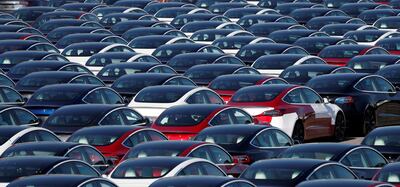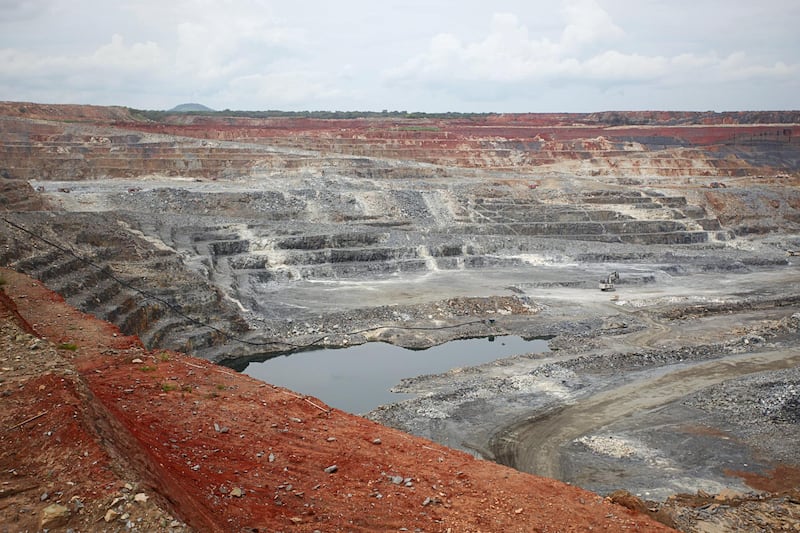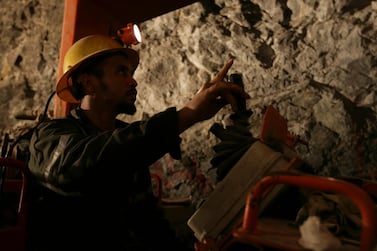Africa is about to experience a battery investment bonanza, necessitated by a mass transition to electric vehicles that will require large amounts of minerals.
As major car makers rev up their electric vehicle ambitions, demand for lithium, graphite, cobalt, copper, nickel and other metals – all crucial for batteries – is set to soar.
The International Energy Agency expects EV sales to reach 44 million annually by the end of this decade. Demand for lithium is set to balloon to $60 billion by 2025 from $8bn in 2018, according to trade body United Nations Conference Trade and Development.
“It’s crucial to remember that building and securing the battery supply chain, from mine to gigafactory is key,” said Simon Moores, chief executive of Benchmark Mineral Intelligence, which monitors the metals supply chain.
Last year, the UK set a target to ban new petrol and diesel vehicles by 2030. Mr Moores said in order to meet the demand for new vehicles, the country will need at least 4 largescale battery production factories.
“For its 4 gigafactories, the UK will need the equivalent of the half of all lithium produced in 2020, and more than the entire world’s supply of graphite anode in 2020.”
Benchmark's research shows at least 175 battery super-factories have come online over the past five years, with more on the way. In 2020 alone, China announced another 38 battery plants, Europe two and at least three are planned for the US. This puts African countries in the front line to supply the raw materials.
“There's no other land mass that has such a large concentration of critical minerals,” said Nechan Naiker, group chief executive of Megamillion, a Johannesburg-based lithium battery supplier. “Everything in the value chain is found in this region.”
Zimbabwe has large quantities of lithium, northern Mozambique has some of the world’s largest deposits of graphite, South Africa has the world’s largest known reserves of manganese and platinum, as well as substantial nickel deposits.
Copper, another crucial mineral for electric vehicle production, is found in Zambia and the Democratic Republic of Congo (DRC). Cobalt, crucial to the current generation of battery technology is also produced in the DRC, which now accounts for 73 per cent of world production.
However, getting the minerals out of the ground will take time, and money, noted Mr Naiker.
“The supply chain could kill this industry. You can build a beautiful factory, but without the supply chain in place, it’s just a building.”
Often, mines need to build not just their own immediate operations, but support logistics and infrastructure such as ports, railways and power stations. Due to this, mining activities have tended to focus on high-value minerals such as gold and diamonds, or low-cost extraction base metals such as iron ore and coal.
Now, with demand for battery minerals set to grow exponentially, the economics of building extraction capacity has come into line.
An example is AVZ Minerals, an Australian-listed company developing the Manono mine in southern DRC. The project will cost at least $545 million and will be one of the world’s largest producers of lithium.
“This is the largest hard rock lithium deposit in the world,” said AVZ chief executive Nigel Ferguson. “It’s a world class project.”

The mine is capable of meeting 25 per cent of Europe’s current lithium demand, but will need substantial infrastructure investments to get the metal to market. Rail routes will have to be introduced to move product from the land-locked region to the coast at least 1,600 kilometres away.
The mine will also consume vast amounts of electricity to run its extraction plants to retrieve lithium from crushed ore. An old colonial era hydro dam is being completely refurbished to supply the needed electricity to the mine and to the surrounding community.
“This will be enough to power our sulphate plants as well as one or two towns down the road,” Mr Ferguson said. The mine will also deploy EV in its operations, to obviate the need for flying in diesel, at great cost. This, along with hydro power, will greatly reduce the mine’s carbon footprint.
“From an operational view, we will be one of the greenest producers in the industry worldwide, Mr Ferguson said.
In the meantime, analysts see a crunch in supply until production catches up, which in turn can drive up prices. According to Benchmark data, the price of battery grade lithium in China spiked 40 per cent, as consumers increased their purchase of EVs as they emerged from Covid-19 lockdowns.






